
CFD Study Comparing Racecar Wing Mounts
A growing trend among racecar designers is to use a 'swan neck' wing mount that attaches to the pressure surface of a wing. Historically wing mounts have connected to the suction surface of a wing. What difference does the wing mount strategy make to overall car downforce and drag? Let's investigate using Computational Fluid Dynamics (CFD) on a BMW Z3 - the same model I used in a previous CFD study to show how effective adding a wing is to increase downforce.
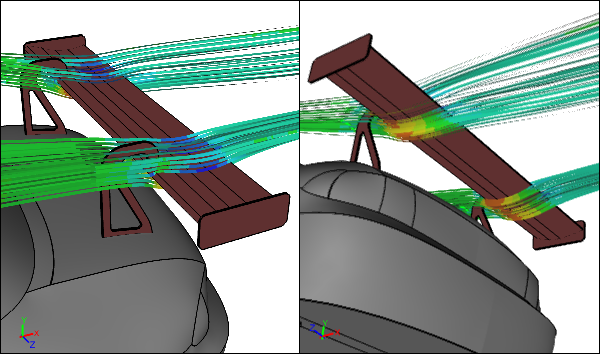 CFD Simulation of a Racecar with a 'Swan Neck' Wing MountStream ribbons colored by velocity magnitude
CFD Simulation of a Racecar with a 'Swan Neck' Wing MountStream ribbons colored by velocity magnitude
Background
What you do on the suction surface of a wing determines the wing efficiency (lift divided by drag), whereas the pressure surface is typically less sensitive. On airplanes with wing-mounted engines virtually all designs have the engines mounted under the wing on the pressure surface to maximize the wing's efficiency.
In the quest for ever more downforce racecar designers have begun using wing mounts that attach to the pressure surface of a wing rather than the suction surface. Aerodynamic efficiency is important for racecars, but there is typically more emphasis on generating downforce to enable higher cornering speeds. Drag is usually a secondary concern.
CFD Models
Given the same BMW Z3 geometry from my previous CFD study I created one model with a standard mount attached to the suction surface of the wing and a second model with a 'swan neck' mount attached to the pressure surface of the wing.
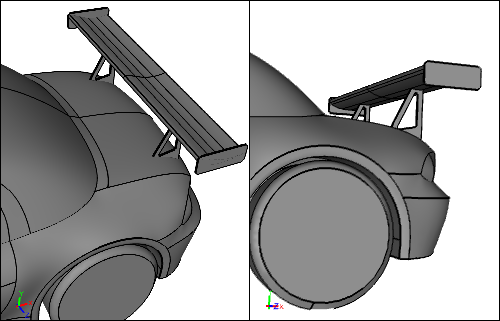 Standard Wing Mount Geometry
Standard Wing Mount Geometry
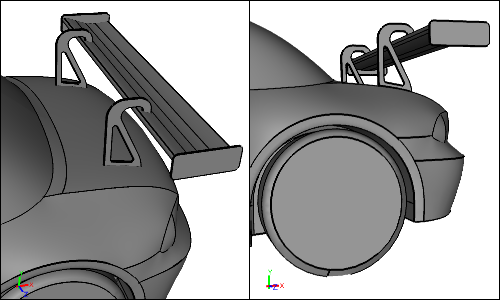 'Swan Neck' Wing Mount Geometry
'Swan Neck' Wing Mount Geometry
Results
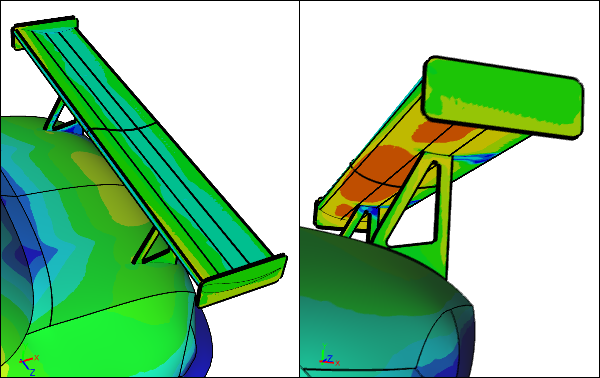 CFD Simulation of a Racecar with a Standard Wing MountSurface velocity magnitude contours
CFD Simulation of a Racecar with a Standard Wing MountSurface velocity magnitude contours
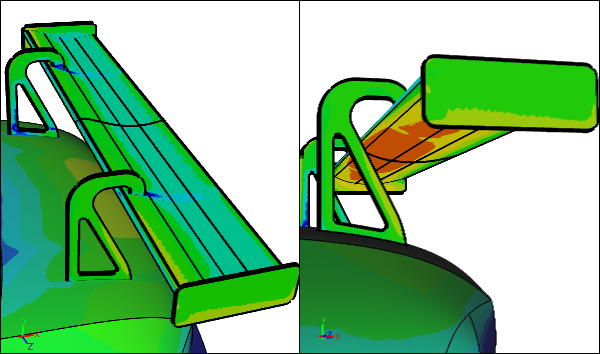 CFD Simulation of a Racecar with a 'Swan Neck' Wing MountSurface velocity magnitude contours
CFD Simulation of a Racecar with a 'Swan Neck' Wing MountSurface velocity magnitude contours
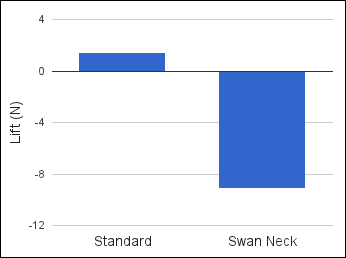 Total Car Lift for Different Wing Mounts
Total Car Lift for Different Wing Mounts
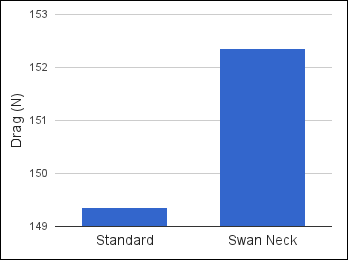 Total Car Drag for Different Wing Mounts
Total Car Drag for Different Wing Mounts
Conclusion
This CFD study shows that the 'swan neck' mount produces more overall downforce on the racecar than the standard mount. However, the penalty for more downforce is that the 'swan neck' also produces more overall drag on the racecar than the standard mount. Still the main concern for racecar designers is maximizing downforce, so you can see why a designer might favor the 'swan neck' mount.
Notes
- Original car geometry courtesy of Andrew Shedden, as pro engineering
- Car speed equivalent to 65 mph, with moving ground and rotating wheels
- Simulations set up and performed in Caedium Professional using the incompressible, steady-state RANS solver, and the k-omega SST turbulence model
Recent blog posts
- CFD Simulates Distant Past
- Background on the Caedium v6.0 Release
- Long-Necked Dinosaurs Succumb To CFD
- CFD Provides Insight Into Mystery Fossils
- Wind Turbine Design According to Insects
- Runners Discover Drafting
- Wind Tunnel and CFD Reveal Best Cycling Tuck
- Active Aerodynamics on the Lamborghini Huracán Performante
- Fluidic Logic
- Stonehenge Vortex Revealed as April Fools' Day Distortion Field
